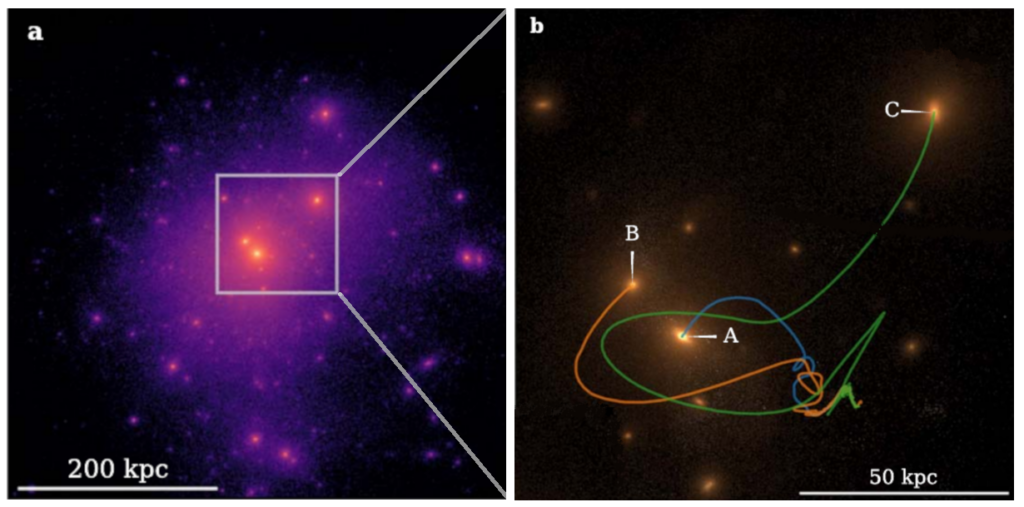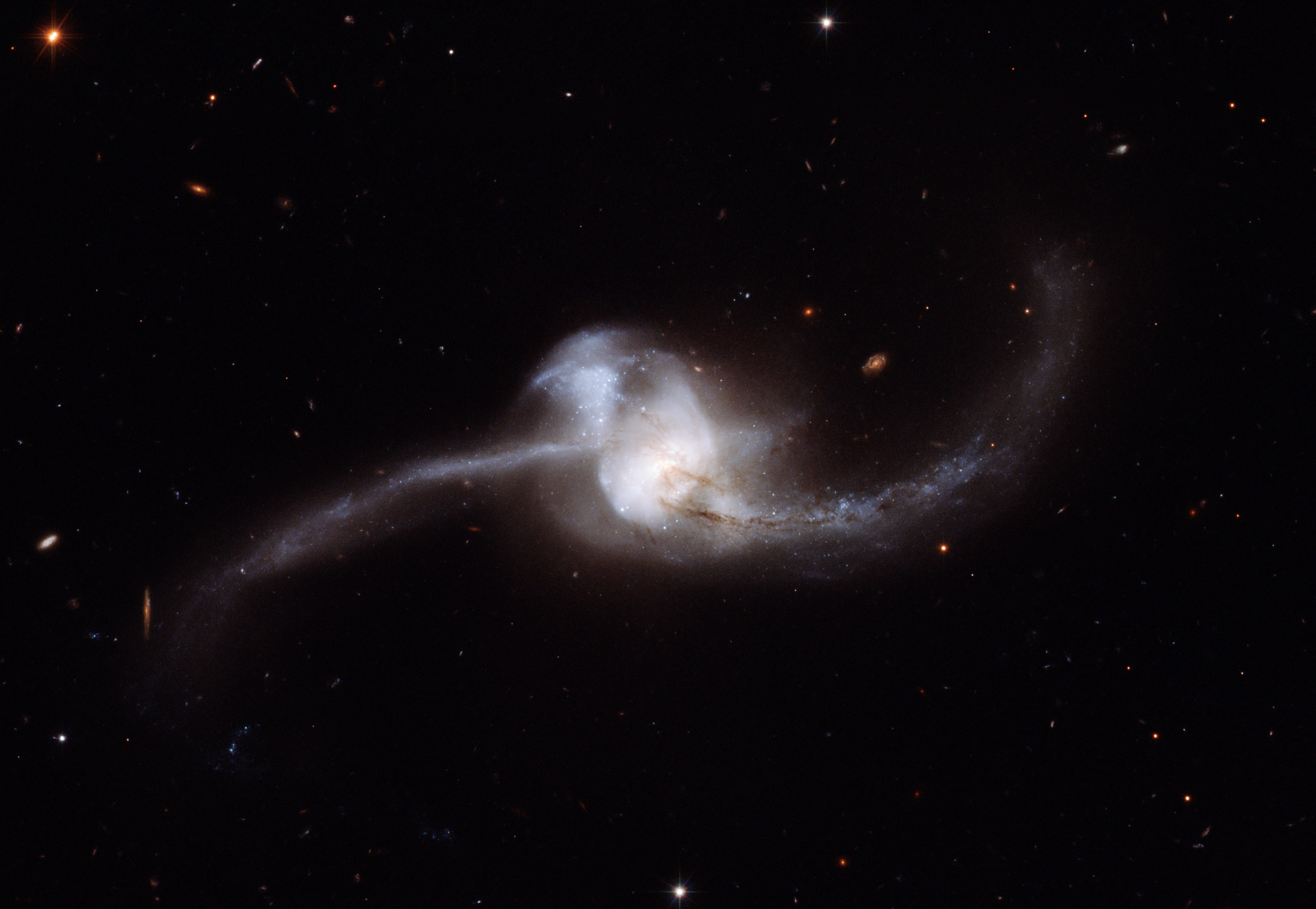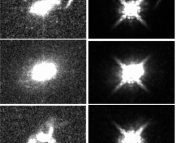Title: Resolving the Complex Evolution of a Supermassive Black Hole Triplet in a Cosmological Simulation
Authors: Matias Mannerkoski, Peter H. Johansson, Antti Rantala, Thorsten Naab, and Shihong Liao
First Author’s Institution: Department of Physics, University of Helsinki, Finland
Status: Published in The Astrophysical Journal Letters [closed access]
Supermassive black holes are very spirited and temperamental. With all their devotees circling around, it comes as no surprise that they become showboaters. Everyone wants to be in the spotlight, and with that, quarrels are definitely predestined.
Take what you can, give nothing back
Black holes are extremely massive objects with huge gravitational forces. Nothing they get a hold of can ever escape, not even light.
The strongest and heaviest specimen, supermassive black holes (SMBHs), live in the center of massive galaxies. Understanding their evolution is crucial to shedding light on the life cycle of galaxies.
There are two main ways black holes can gain weight to become supermassive. One way is that they grow through accretion by eating up all the material around them, another way is through black hole mergers when they get close enough to each other. Because of their strong gravity, they begin to spiral around each other until they eventually merge into one single object.
SMBHs can merge when their host galaxies collide. The merge takes place in three stages. Beginning at kiloparsec scales in the first stage, their distance decreases to tens of parsecs. They lose energy through dynamical friction with the surrounding stars until the black holes are bound in a binary. In the second stage, they get closer due to scattered stars stealing angular momentum away. This stage is called hardening. The third stage begins on sub-parsec scales where gravitational waves carry away the remaining energy and drive the two to merge.
But what happens if a third galaxy comes about before they merge? Suddenly, a third SMBH wants to join the party – a triple system as shown in Figure 1 thus forms. A few of those triple systems have already been observed.
Solving computer problems with zoom
The dynamical evolution of triple systems can be studied in simulations. The challenge is that while galaxies are thousands of parsecs in diameter, much smaller scales need to be resolved as well for the mergers. Approaching this with common methods takes a lot of computation time. This is why so far, it was not possible to simulate galaxy collisions and black hole mergers in a single simulation.
The authors of today’s paper found a solution: zoom-in simulations (no, not the video conference system). These simulations can handle large and small scales at the same time. The idea is that only particular regions are resolved on small scales. In our case these are the galaxy centers where the mergers are happening. The simulation models the hardening process of black hole binaries as well as the stellar dynamics in the more exterior regimes accurately. What does the evolution look like?
Supermassive black hole triple trouble
In the beginning of the simulation, each black hole hosts an individual galaxy. The authors name the galaxies A, B, and C (see Figure 2).

Galaxies A and B merge first. As their SMBHs fight with each other for the best spot, they evolve through the first stage, forming a binary. During the second stage, Galaxy C wants to join the party. Black Hole C is pushing and pulling with all its gravity on the other two. It successfully alters the eccentricity of the binary severely. Black Hole B is thus pushed far away to a wide orbit as shown in Figure 3. Now, A and C quarrel for the best spot in the center while B is watching from the outer ranks. B can sit back and enjoy the show for several gigayears.
Meanwhile, Black Holes A and C are less relaxed. Their fight gets so out of hand that it finally consumes them and they merge. But B’s enjoyment doesn’t last forever. Still greedy for the center spot, B approaches the freshly merged black hole and forms a new binary. The simulation ends before B meets its demise, but the authors predict its doom: by evaluating hardening rates they find that it only has half a billion years left.
What difference does it make anyway?
This exciting quarrel is a story worth telling, but even more interesting is the comparison to a simulation without the zoom-in method. In this case, Black Holes A and B would quickly merge after their galaxies collide before C even gets a chance to join. This results in completely different dynamics. Additionally, the authors find that the stellar density of the remaining (merged) galaxy is 30% lower when using their zoom-in method, which indicates that more stars were eaten by the black holes.
This clearly shows that taking into account the small-scale dynamics in the center regions drastically changes the evolution of the whole system and is necessary to accurately study this phenomenon. We’re looking forward to future black hole drama – let’s hope it doesn’t end badly for all the black holes!
Astrobite edited by Lindsay DeMarchi and Mitchell Cavanagh
Featured image credit: https://futurism.com/astronomers-find-a-galaxy-with-a-triple-black-hole-system




